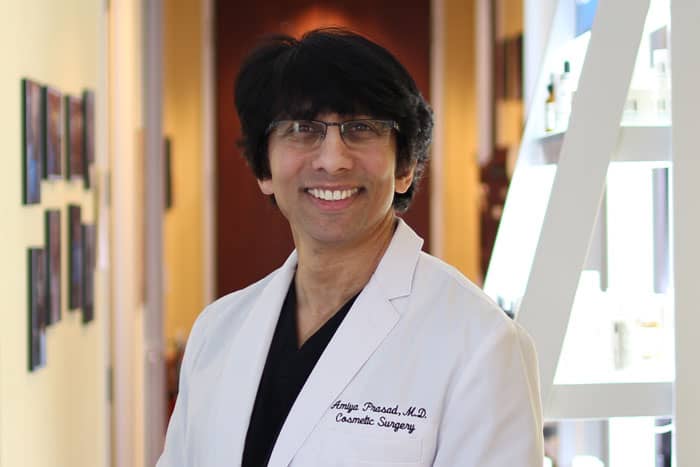Possible Reasons of Drooping Eyelids Over Time
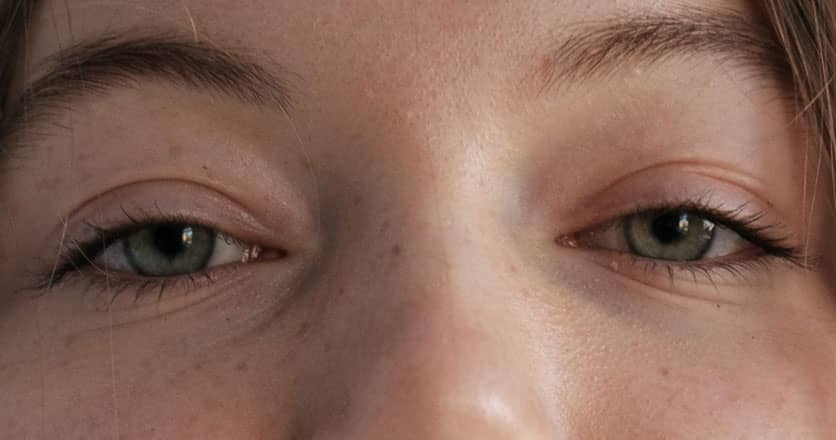
Eyelid Drooping After Botox
We frequently see patients in our office who are concerned about the appearance of their drooping eyes. They frequently express having difficulty keeping their eyes open, particularly as the day progresses. Some of these patients will relate how they struggled to keep their eyes open while driving for an extended amount of time.
I frequently see individuals who have had Botox treatment for forehead lines, only to realize that their eyes appear smaller as a result of the treatment.
These same patients were surprised to hear that the lines on their foreheads were deepening as a result of unconsciously raising their brows to open their drooping eyes. Botox injections effectively highlighted how low their upper eyelids had been all along.
They often believe that their sagging eyes are caused by excess skin pressing down on their eyes, which would indicate the need for cosmetic upper eyelid blepharoplasty to remove this excess skin.
Although blepharoplasty may be beneficial, removing extra skin will not treat another common condition known as upper eyelid ptosis. Upper eyelid ptosis is diagnosed by taking certain measurements of the upper eyelid’s location in relation to the center of the eye or pupil.
Eyelid ptosis occurs when the upper eyelid is closer to the pupil than is normally the case. This means that if you don’t notice the presence of ptosis and get upper eyelid blepharoplasty, you’ll still feel like your eyes are sagging and appear tired afterwards.
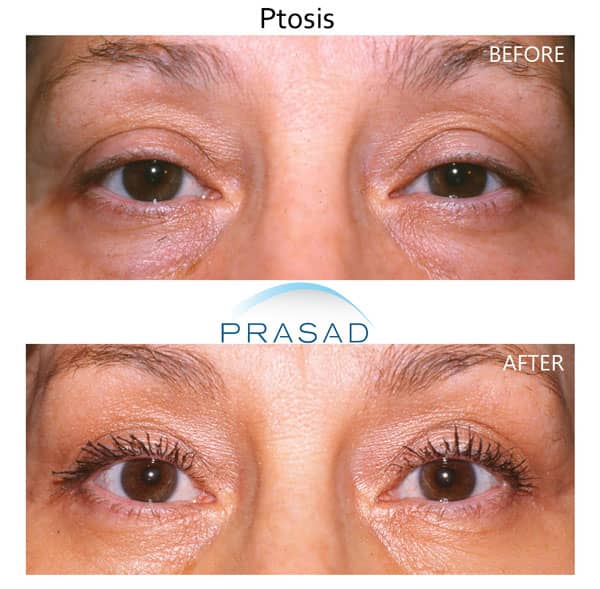
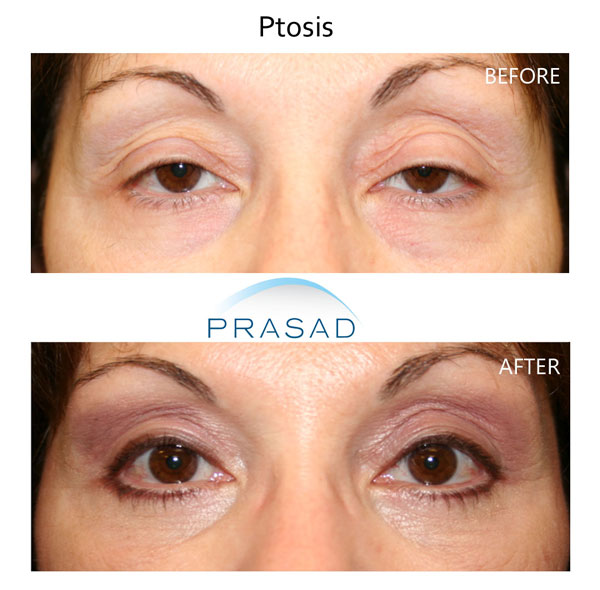
Reasons Why Eyelids Droop (Ptosis)
There are different reasons for eyelid ptosis. I’ll go over the most common reasons of ptosis, which we encounter frequently in our clinic, as well as what we do to make our patients look and feel better.
Eyelid ptosis can affect one or both eyes, and is classified as unilateral or bilateral. Eyelid ptosis can be present at birth and is known as “congenital ptosis”. “Acquired ptosis” refers to eyelid ptosis that develops after birth. Aside from neurologic causes of ptosis, we base treatment on specific properties of the levator muscle, which elevates the top eyelid.
Sudden Drooping of One Eyelid Possible Causes
I frequently see individuals who report that when they look at images of themselves, their eyes appear to shrink.
They frequently report experiencing some of the symptoms I discussed previously such as eye fatigue as the day progresses. Although thyroid eye disease or Graves disease is often characterized by upper and lower eyelid retraction or eyes that appear overly open, with Graves’ disease the upper eyelid might droop, resulting in upper eyelid ptosis.
Acquired ptosis can also be caused by an event, such as a car accident, in which severe swelling can result in persistent stretching or detachment of the levator muscles. Ptosis can develop even after normal cosmetic upper eyelid surgery. This could be due to swelling after surgery, or because of the surgery itself worsening the condition of the eyelids, making the problem more obvious.
In general, I observe a lot of acquired ptosis as a result of levator muscle alterations as people age. This often signifies that the muscle tendon known as the aponeurosis has stretched or split, causing the upper eyelid to droop downward.
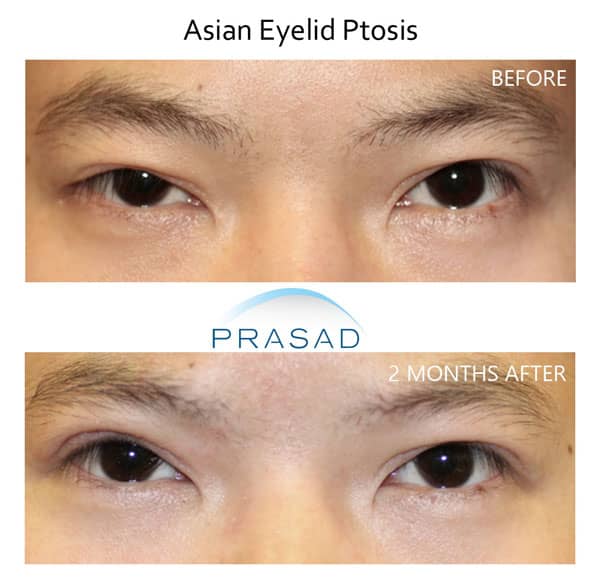
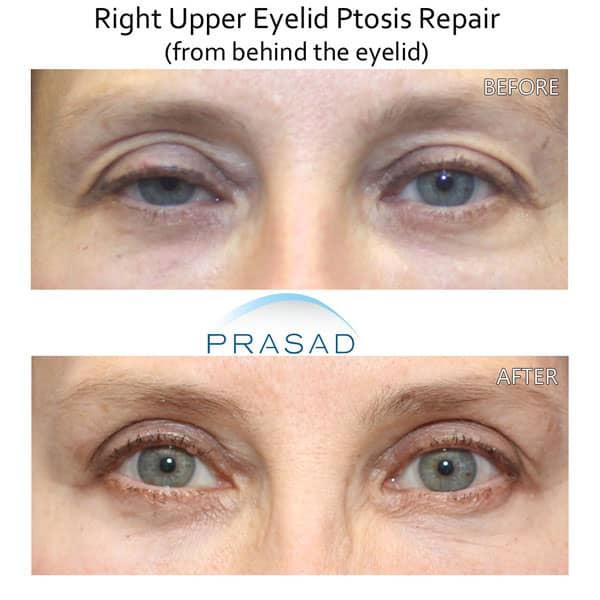
I also met a number of people who were conscious that they had “sleepy” eyes from a young age, and that their eyes drooped even more as they became older.
Ptosis Treatment
Surgery is often the best option for treating acquired ptosis. Eyelid ptosis surgery is deceptively difficult, and should not be attempted by plastic surgeons without specialist training in oculoplastic surgery.
Although eyelid surgery is consistently ranked as one of the top five cosmetic surgery procedures in the United States, it is far from being performed with a consistent and uniform technique by doctors. A methodical approach to detecting the presence of ptosis, as well as a thorough grasp of the possible cosmetic outcomes, is crucial to achieving success.
When it comes to treatment planning for any procedure, my goal is to minimize risk, provide excellent results, and ensure a speedy and uncomplicated recovery.
A high degree of technical proficiency, and working with a team of skilled assistants in a dedicated facility help to reduce surgical risk. For example, we are all aware with facilities that specialize in orthopedic surgery or laser eye correction.
In the same vein, in our offices, I designed my own surgery facilities to my specifications, giving me and my staff the maximum control over conducting the technical parts of your procedure in the best way possible.
Ptosis Surgery Process
As far as the actual surgery, I often perform ptosis surgery by working on muscles that lift the eyelid from the underside of the upper eyelid. This strategy has consistently worked in my experience. Working from the underside of the eyelid is especially successful when there is no need for skin removal, which speeds up the recovery process.
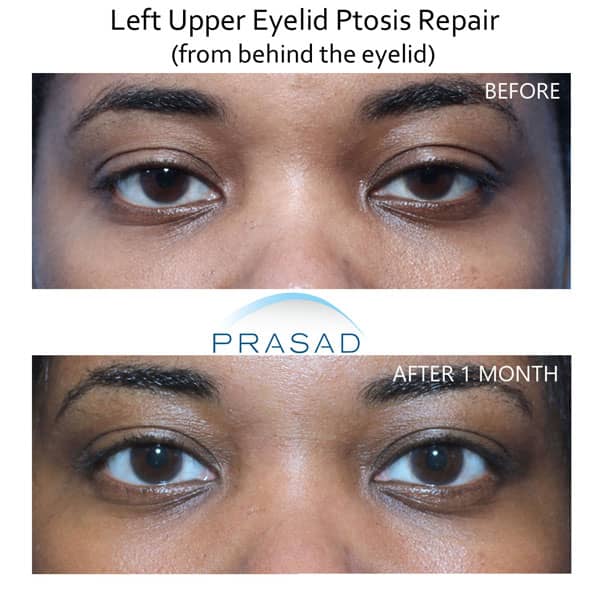
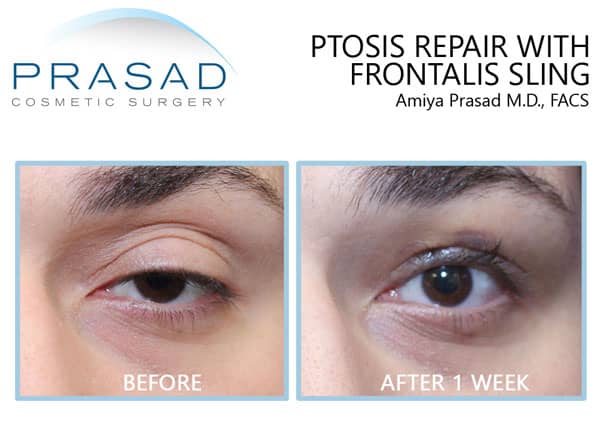
I also conduct different types of ptosis surgery from the front of the upper eyelids, such as levator muscle advancement, as well as frontalis sling procedures which do not include levator muscle activity. I also focus on reducing risks to your health and recovery through the type of anesthesia we administer for your comfort.
We achieve this by avoiding general anesthesia. General anesthesia is a process where the patient is rendered unconscious and immobilized during surgery with a tube in the throat to allow you to breathe with the help of a mechanical respirator or ventilator. Common side effects include nausea, vomiting, constipation, and a lengthier recovery period.
In contrast, I routinely perform cosmetic eyelid surgery and ptosis correction with local anesthesia with LITE IV sedation. Our patients are at ease throughout their procedure, and feel great shortly afterwards. During their recovery, they usually don’t need any pain medication, or expert nursing care. I often visit our patients after one week, when they are usually ready to return to work with minor bruising and swelling.
Importance of Identifying Ptosis
The objective of cosmetic eyelid surgery is to help you look less tired and have a more vibrant appearance. If you don’t recognize ptosis being present, you won’t realize the full potential you have to look your best. A thorough evaluation that identifies and addresses acquired ptosis can have a substantial impact on how you appear and feel. I hope this information from my experience was helpful to you.
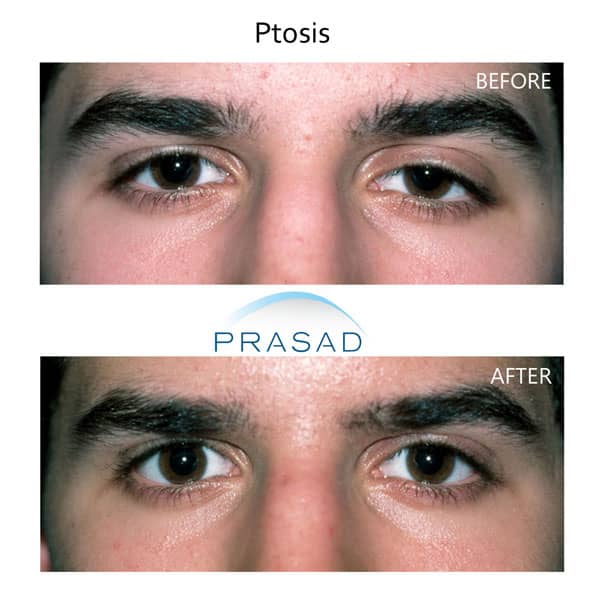
Ptosis Surgery Manhattan NYC and Long Island, New York
Dr. Amiya Prasad is a Diplomate of the American Board of Cosmetic Surgery and a Fellowship-trained oculofacial plastic and reconstructive surgeon. He’s been in practice in New York City and Long Island for over 25 years.
Dr. Prasad performs a wide range of cosmetic eyelid procedures in his practice, such as transconjunctival lower eyelid blepharoplasty, upper eyelid blepharoplasty, and double eyelid surgery. Among the other advanced procedures he performs, he helps people with conditions such as thyroid eye disease or Graves’ disease, and revision surgery for complications of cosmetic eyelid surgery performed by other surgeons.
If you’re interested in recommendations for your individual situation, you may contact us by filling out the form below or by calling any of our offices at (212) 265-8877 for Manhattan, New York City; (516) 742-4636 for Garden City, Long Island; or (703) 356-1336 for Vienna, Virginia.

